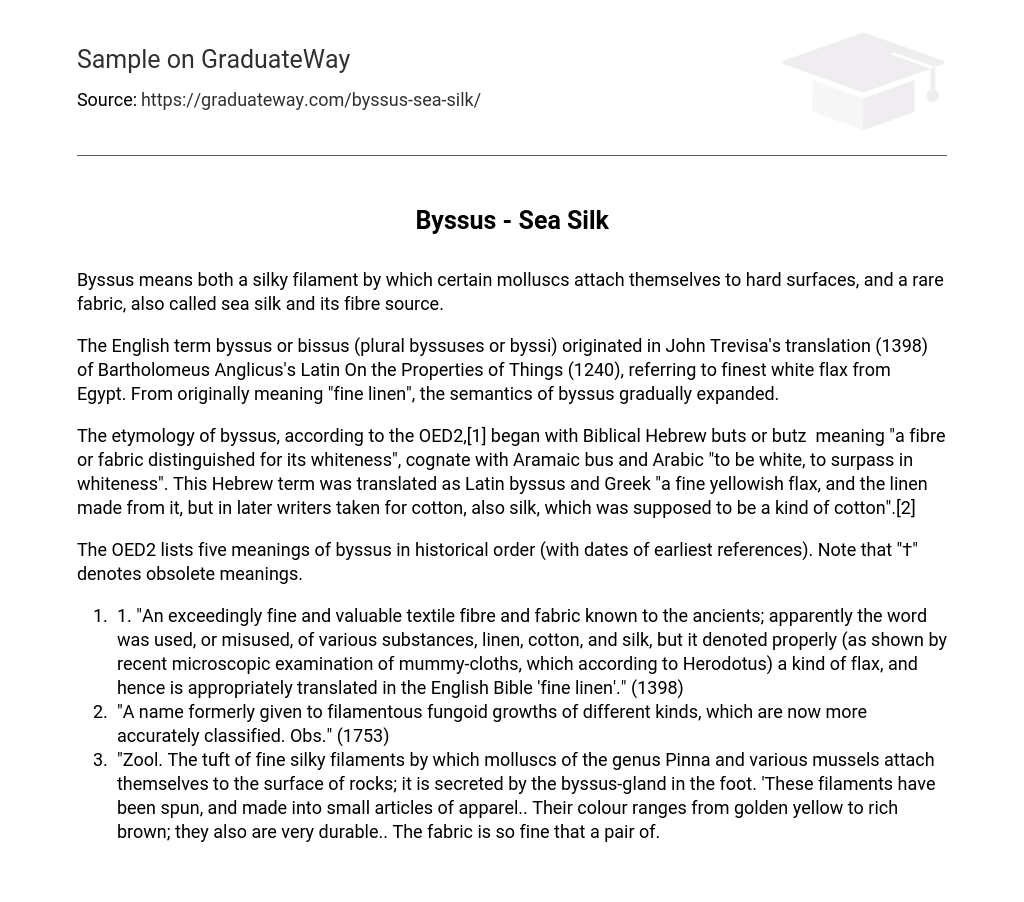Byssus means both a silky filament by which certain molluscs attach themselves to hard surfaces, and a rare fabric, also called sea silk and its fibre source.
The English term byssus or bissus (plural byssuses or byssi) originated in John Trevisa’s translation (1398) of Bartholomeus Anglicus’s Latin On the Properties of Things (1240), referring to finest white flax from Egypt. From originally meaning “fine linen”, the semantics of byssus gradually expanded.
The etymology of byssus, according to the OED2,[1] began with Biblical Hebrew buts or butz meaning “a fibre or fabric distinguished for its whiteness”, cognate with Aramaic bus and Arabic “to be white, to surpass in whiteness”. This Hebrew term was translated as Latin byssus and Greek “a fine yellowish flax, and the linen made from it, but in later writers taken for cotton, also silk, which was supposed to be a kind of cotton”.[2]
The OED2 lists five meanings of byssus in historical order (with dates of earliest references). Note that “†” denotes obsolete meanings.
- 1. “An exceedingly fine and valuable textile fibre and fabric known to the ancients; apparently the word was used, or misused, of various substances, linen, cotton, and silk, but it denoted properly (as shown by recent microscopic examination of mummy-cloths, which according to Herodotus) a kind of flax, and hence is appropriately translated in the English Bible ‘fine linen’.” (1398)
- “A name formerly given to filamentous fungoid growths of different kinds, which are now more accurately classified. Obs.” (1753)
- “Zool. The tuft of fine silky filaments by which molluscs of the genus Pinna and various mussels attach themselves to the surface of rocks; it is secreted by the byssus-gland in the foot. ‘These filaments have been spun, and made into small articles of apparel.. Their colour ranges from golden yellow to rich brown; they also are very durable.. The fabric is so fine that a pair of.





